- NEW DVD Series – Stone Setting with Bezels
- Tube Set Charm by Kim St. Jean
- Prong Basket Pendant by Kim St. Jean
- NEW DVD Series – Stone Setting with Cold Connections
- New DVD Series – Stone Setting with Wire
- NEW DVD Series: Introduction to Stone Setting by Kim St. Jean
- Featured Tool: Bracelet Bending Plier
- NEW Dvd by Eva Sherman
- Fun, Fast Fold Forming DVD Series
- Double Band Ear Cuff from Alex Simkin
Featured Tools: Solder Paste
by Judy Ellis, Wirejewelry.com
Wire Jewelry Tool Tip for June 1st 2016
Paste Solder
by Kate Richbourg
If you use solder in your jewelry craft then you’ll need to be sure you have plenty of solder for your current project and future projects. We carry many different types of solder for many different purposes and different metals. Whether you’re looking for gold, silver, copper, pewter or aluminum solder, we have you covered.
Take a look at this quick video tip by Kate, as she shows us how to use paste solder.
Kate Says:
Types of Solder: (there are many more…)
Aluminum Solder, 7.1 Grams
Copper Bearing Solder, 14.7 Grams
Silver Bearing Solder, 7.1 Grams
Now that you’ve seen a just a few types of solder available and easy it is to use them – take a look at all of the Soldering Tools and Accessories available on our sister site JewelryTools.com. I’m sure you’ll find something you are looking for!
Happy Wrapping!
![]()
Click to Receive Daily Tips by Email





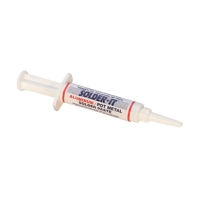
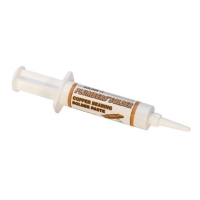
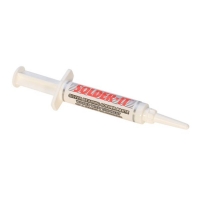
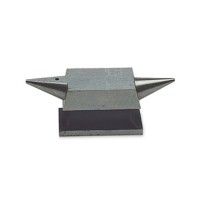
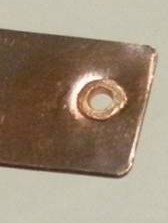
















Kat
June 1, 2016 at 5:31 am
Great Idea, Thank You. But How do you know what Thickness to use? it comes in different thickness. Please reply. Thank You.
Really like your Video’s.
Judy Larson
June 1, 2016 at 10:43 am
Paste solder does not come in different thicknesses. It is a paste that comes in easy, medium and hard, just like sheet solder. That just refers to the temperature at which the solder flows. When joining metals in different steps, you always start with the highest flow temp first and work your way down as you add more pieces to your project. Hope this helps.
Annette Thompson
June 1, 2016 at 6:42 am
I appreciate the information, but would have really loved to see her actually solder it. The way this video was finishe3d up it almost implied it would dry and be fine….did she use a torch? can you use a soldering iron?
Judy Larson
June 1, 2016 at 10:40 am
You use a torch with paste solder. Once it flows, it is just like other jewelry solder. I like it because I do not have to flux my pieces before soldering. As with all soldering, your metal needs to be clean for the join to be secured properly.
Olga Teague
June 1, 2016 at 12:42 pm
Thank you for this information. I have a question about Copper Bearing Solder. It was specially formulated for use with copper but it leaves a silver color on the soldered piece. Does Kate have any solutions to this problem?
Thank you for your time.
Judy Larson
June 1, 2016 at 2:37 pm
Copper bearing solder, when used correctly, really is not a copper color but a darkened silver color, which blends better with copper. When heated too long after flowing, it turns more of a silver color. Also, if too much solder is used, it is more likely to flow away from the seam, creating grey solder flow areas around the seam. It is best to remove excess solder, but this is not always possible. Sometimes the excess copper in reused pickle “coats” the solder when you pickle each piece, which can make the piece appear like the solder was never there, especially after using LOS to patina.
Your best bet when using copper bearing solder is to use way less than you think you need and immediately remove the heat when you see the solder flow.
Olga Teague
June 2, 2016 at 8:39 pm
Thank you very much for your answer Judy. Home made copper plating solution seems to be the best remedy for the problem.
Lisa
June 4, 2016 at 12:09 pm
Hi,
I tried to give the solder paste many time with no luck. It always burns to ash. I have never gotten it to flow.
I have watch several videos on copper solder paste and it looks so easy.
Any tips that may help?
Judy Larson
June 14, 2016 at 8:19 am
I just noticed your question. Without knowing what kind of torch you are using and the size of your project, my answer is only a guess.
If your paste solder turns to “ash,” it has not reached a high enough temperature to flow.
If you are using a butane torch, it may not be burning hot enough. A butane torch burns hottest after filling, so I fill mine before I start a project and sometimes during the project as well.
If your project is too large (over 1 1/2″) or too thick and you are using a butane torch, the torch cannot heat the metal up enough all over to “melt” the solder to a flowing stage. Using two butane torches at the same time can help, one used on top of the project and one from underneath.
You might want to consider a different type of torch that heats up to more than 2450.
Motoron Semiconductors
February 17, 2017 at 2:15 am
Great list!! Thanks for sharing.Great post, thanks for sharing .if you want to get Silver paste in kharagpur http://motoronsemiconductors.com/